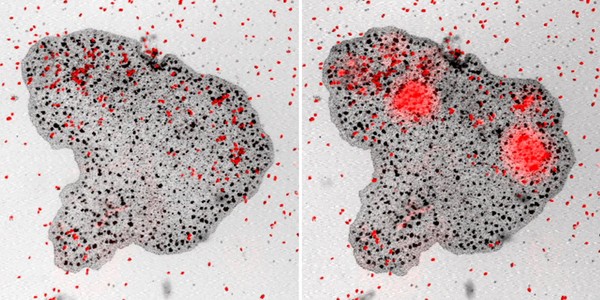Trichoplax adhaerens is the only known member of the Placozoa phylum that exists in the present day. The animal has no nerves, no organs, and only six types of different cells. Carolyn Smith and colleagues from the National Institute of Health in Bethesda in Maryland are the first to decipher the way the animal eats.
Trichoplax adhaerens was first discovered in 1883. The animal is rarely found in the wild and usually exists in fish tanks. The animal is a very simple organism that contains 87 percent of the genes of all other known animal species yet has no organs or nerves. The animal is 25 micrometers thick. The animal is one of the few existing species that can regenerate completely from just a few cells. Many researchers claim that this species may be the last remaining member of the first multicellular life that evolved on Earth.
Trichoplax adhaerens moves using cilia that are on the bottom layer of the external cell walls. The movement of the animal is determined by the food density around the animal. The top speed of the animal is 15 micrometers per second in low food density conditions. The animal feeds on microbes and algae.
The researchers used several techniques to observe the feeding habits of the animal at a macroscopic level and at a cellular level. They found a certain cell type called lipophils secretes granules when the animal stops moving around algae. The granules begin a digestive process that is external to the body of the animal and the alga is broken down into basic chemical components and then ingested by the animal. The animal detects the algae before it secretes any digestive chemicals in a manner that is yet unknown.















